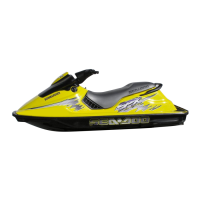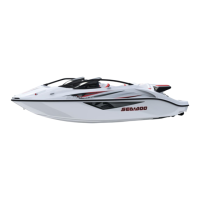SAFETY INFORMATION 15
complete wet suit or dry suit. Not only
will it make your ride more comfort-
able, but it may delay or protect you
from hypothermia if you fall into cold
water. Be prepared for changing
conditions.
HHeellmmeettss:: WWeeiigghhiinngg tthhee RRiisskkss
vvss BBeenneeffiittss
Since each option minimizes some
risks, but increases others, before
each ride you must decide whether to
wear or not wear a helmet based on
your particular situation. If you decide
to wear a helmet, look for helmets that
meet DOT or Snell standards, and if
possible, choose one designed for
motorized watersports.
Helmets are designed to offer some
degree of protection in case of im-
pacts to the head. In most motorized
sports, the benefits of wearing a hel-
met clearly outweigh the drawbacks.
However, in the case of motorized
watersports such as riding personal
watercraft, this is not necessarily true
as there are some particular risks as-
sociated with the water.
BBeenneeffiittss
A helmet helps to reduce the risk of in-
jury in case of a head impact against a
hard surface such as another craft in
the case of a collision. Similarly, a hel-
met with a chin guard might help pre-
vent injuries to the face, jaw or teeth.
RRiisskkss
On the other hand, in some situations
when falling off the watercraft, hel-
mets have a tendency to catch the
water, like a “bucket”, and put severe
stresses on the neck or spine. This
could result in choking, severe or per-
manent neck or spine injury or death.
Helmets may also interfere with pe-
ripheral vision and hearing, or in-
crease fatigue which could contribute
to increase the risk of a collision.
RReeqquuiirreedd EEqquuiippmmeenntt
As the owner of the watercraft, you
are responsible for ensuring that all
required safety equipment is aboard.
Check your local regulations about
requirements.
This could include:
– Fire extinguisher. Maintenance, re-
pair and refilling must be carried
out in accordance with the manu-
facturer’s instructions.
– A watertight flashlight or approved
flares
– Sound-producing device (horn,
whistle or bell etc.)
– Visual Distress Signal
– Phone in a watertight compartment
designed for this application
– Current local map
– First aid kit
– Throw rope.
BEFORE YOU GO
